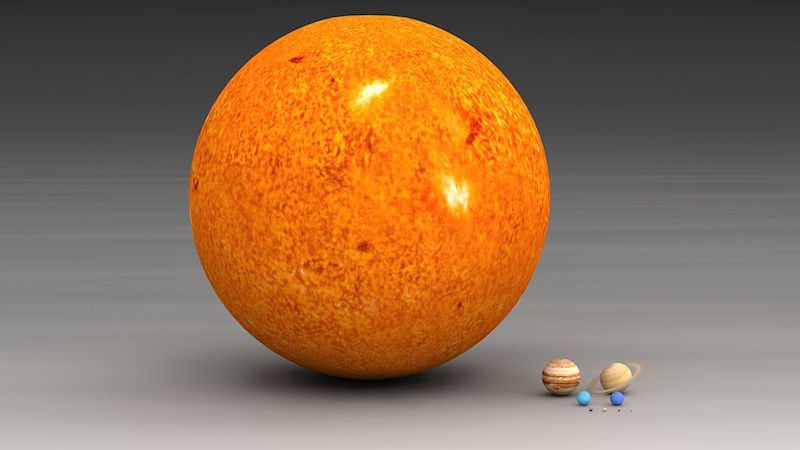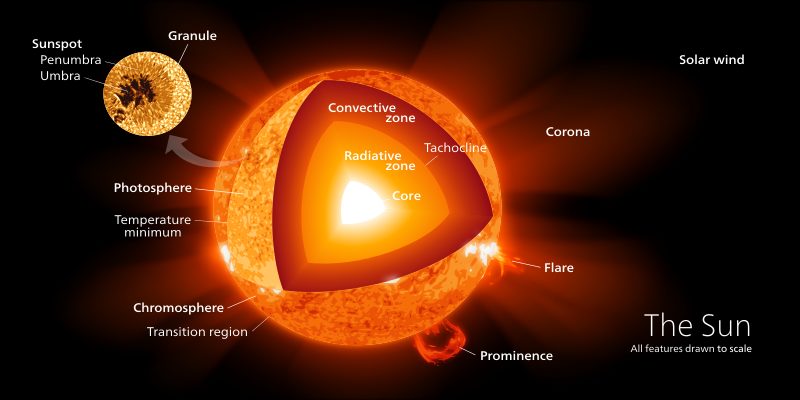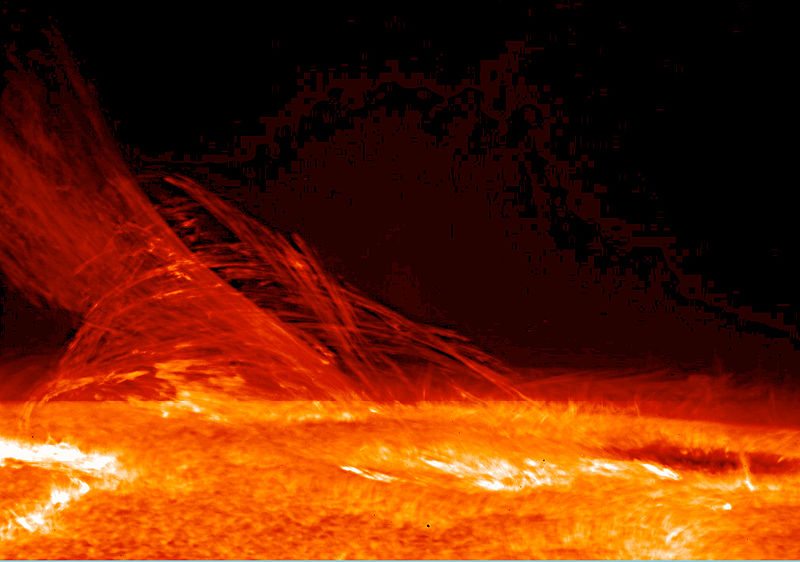Sun
Episode #10 of the course Introduction to the Solar System
At the heart of the solar system sits the Sun, a massive star and the biggest object in the solar system. It has a mass so large that it holds planets in a rotating orbit around it. While the Sun is easily visible with the naked eye, it is actually 93 million miles (14.9 million km) away from Earth. That’s so far away that if the sun were to suddenly burn out, we wouldn’t know about it for eight minutes.
But don’t let the distance fool you. The Sun accounts for approximately 99% of the mass in the solar system, meaning that if you were to combine the mass of every planet, star, and asteroid, the Sun would be 99 times more massive. With a diameter of 864,938 miles (1.392 million km), it’s also 110 times wider than Earth, and over a million Earths could fit inside of it. This enormous mass creates a powerful gravitational pull that keeps all other matter in orbit around the Sun, rather than floating off into space like a balloon whose string has slipped out of your hands.

Size comparison of the Sun and the planets
Beautiful and massive as it may be, the Sun also plays an absolutely essential role in our lives, and without it, there would be no life on planet Earth as we know it. The sun is a Yellow Dwarf star whose massive energy is generated by nuclear fusion (hydrogen converting to helium), which takes place at the core, where temperatures reach 15 million degrees Celsius (27 million degrees Fahrenheit). On the surface of the Sun, temperatures are closer to 5,600 degrees Celsius (10,112 degrees Fahrenheit)—considerably less but sufficient to provide the light and heat we need to survive. Without it, plants would not grow, water would freeze, and no one would be able to survive.

The structure of the Sun (C.) Kelvinsong

Life cycle of Sun
And while the Sun is vital to life on Earth, life on the surface of the Sun is out of the question. The Sun is a giant ball of gas composed of 71% hydrogen and 27% helium that burns at tens of millions of degrees at its core. It is quite literally a great ball of fire, and the surface is made of a turbulent sea of burning gases. Every second, the Sun converts millions of tons of matter into energy. That accounts for more energy than all the energy ever made by mankind. This energy production is responsible for the light and heat that we feel millions of miles away every time we step out our front doors.

Taken by Hinode’s Solar Optical Telescope on 12 January 2007, this image of the Sun reveals the filamentary nature of the plasma connecting regions of different magnetic polarity.

A solar prominence erupts in August 2012, as captured by SDO
Because the Sun is visible from Earth and has played such a pivotal role in human life since the dawn of time, there is no one story of its discovery. Ancient civilizations both worshipped and feared this ball of light, and solar deities can be found throughout most of recorded history, from the Aztecs and Buddhists to ancient Egyptians and Romans. However, around 450 BC, a Greek philosopher named Anaxagoras first suggested that the Sun was in fact a star, and Galileo Galilei is credited with discovering that the Sun is marked with sunspots (dark areas of irregular shapes on the surface of the Sun).
Recommended book
Share with friends

